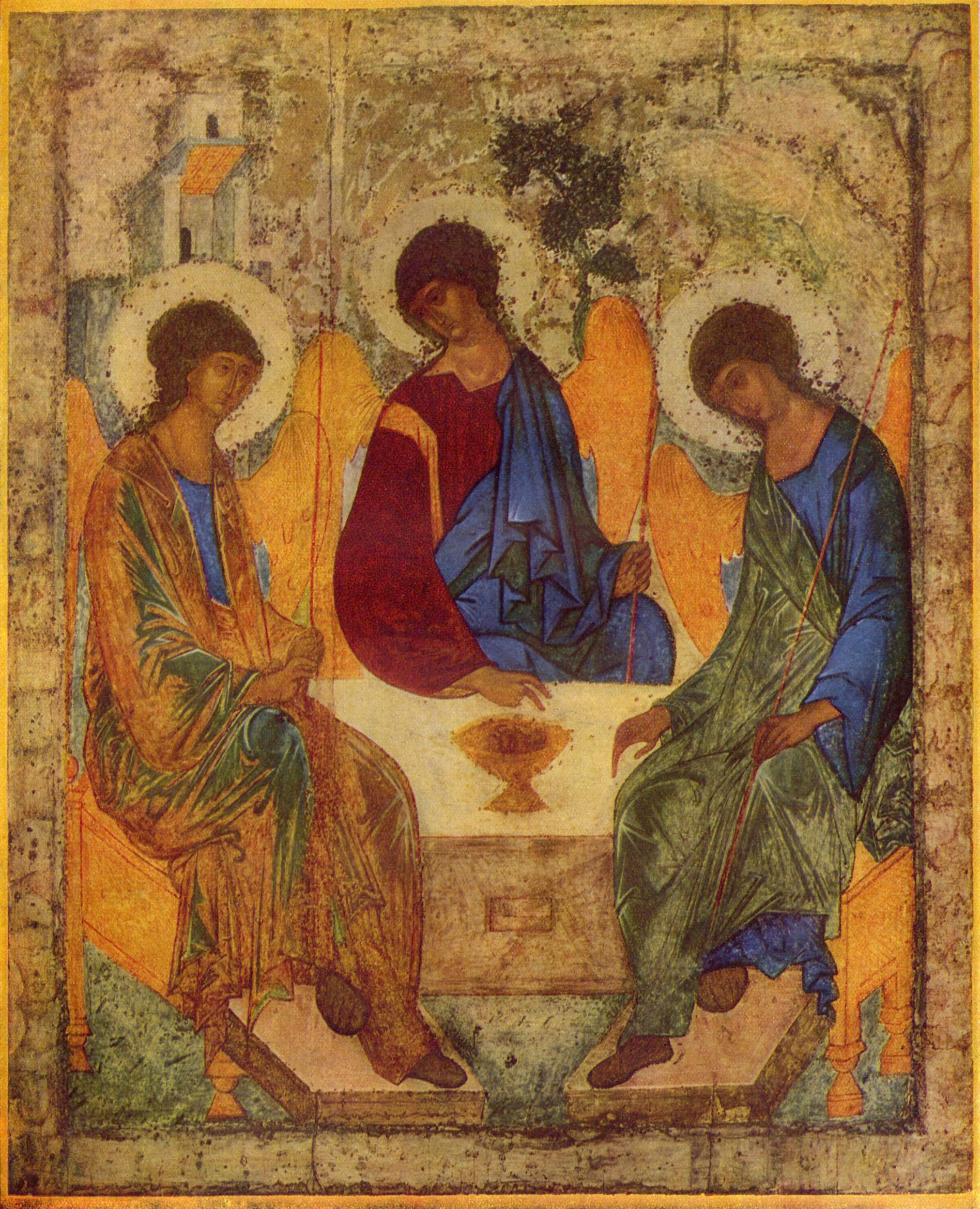Picturing the Trinity: Rublev’s icon and the myth of East/West divisions
There is a famous story, which I have told myself on occasion in the past, of how the different ways of depicting the Trinity in Eastern and Western Christian art demonstrates the different doctrinal emphases that the two traditions developed. The Eastern tradition is identified with Rublëv’s icon of the Holy Trinity, pictured above.
Read MoreA call for conceptual clarity about conceptual clarity
(A title of which Doyeweerd would have been proud…) The collection Analytic Theology (OUP, 2009; ed. by Oliver Crisp and Mike Rea) contains several excellent and entertaining pieces, clustered around a claim that theologians ought to be attentive to the turn to explication of core Christian doctrines by analytic philosophers of religion. The claim seems to me a necessary one; as Thomas McCall puts it elsewhere ‘[s]ome theologians are surprised to learn that theological issues are under consideration at all in the analytic community, while other theologians are skeptical – to say that they are dubious that any good could come out of Notre Dame is to put it mildly.’ (Whose Trinity? Which Monotheism? (Eerdmans, 2010; p.1). For me, ever since interacting with Paul Helm – and indeed Oliver Crisp – when I was a doctoral student, the use and attraction of analytic tools has been obvious. It is simply a given, as far as I can see, that all intellectual work benefits from conceptual clarity, that analytic tools are finely honed precision instruments for the clarifying of concepts, and that contemporary theology has (famous and influential) exemplars whose lack of conceptual clarity is astonishing (see Randy Rauser’s entertaining and sharp application of Harry Frankfurt’s category of ‘bullshit’ to the writings of certain contemporary theologians in Analytic Theology). That said, the pursuit of conceptual clarity using analytic tools has certain limitations, which we need to be clear about. The most purely ‘analytic’ thinker in the Christian tradition is, I think, Eunomius, the primary heresiarch of the fourth century (far more so than Arius). Eunomius worked with a philosophy of language (probably derived via Porphyry from Plato’s Cratylus) in which words, properly used, corresponded to things in a one-one mapping. The proper name of God, naming that which is essential to be divine, is ‘unbegotten’; therefore the Son is not God. The Cappadocian logic which opposed this insisted on a doctrine of ‘analogy’ (to use an anachronistic word – their word was epinoia – have a look just how central this term is to the arguments of Basil and Gregory Nyssan’s books contra Eunomius) – the way words refer to the divine, in particular, is profoundly complex and irreducibly hesitant. There are no words (no, not ‘person’ or ‘relation’, regardless of modern fashions) that do more than gesture mutely and almost ineffectually towards divine reality. For many contemporary theologians some realisation of this problem of language leads to a neglect of analytic philosophy. If contemporary philosophy is to be mined, veins of gold will be sought in Ricouer or (for the intellectually serious) Heidegger, not in the giants of the analytic tradition. This seems to me to be a mistake; as St Thomas (more than any other) shows, it is precisely because our language has such limited purchase when referring to God that we need to pursue conceptual clarity about the precise locations of the limits of our language. However, I confess to not seeing much of this sort of analysis in contemporary analytics. Rather too often, it seems to me, the analytic philosopher lines up a set of well-defined concepts which are either assumed to correspond in an uncomplicated way to reality, or perhaps which have no direct correspondence to reality. To borrow the terms of a different philosophical discourse, clarity about the proper relations of the signifiers is too often achieved at the expense of clarity about how the signifiers might relate to the signified, making the exercise, for the theologian, largely irrelevant. (I do not think I have read an analytic treatment of trinitarian doctrine – a favourite theme – which does not fall foul of this to some extent; I’d be very happy to be pointed to one.) So – yes, yes, and thrice yes, to the attempt to bring the finely-honed tools of analytics into theological discourse, to call theologians to use words with precision and responsibility, and to refuse, ever, to substitute rhetoric for argument – certainly to refuse the temptation to descend into Frankfurtian bull-sessions. But can we say more about the limits of our analysis? Can we be clear and precise about the places where our concepts necessarily lack full clarity and precision? Can we own and never forget that there are some realities that our, unquestionably excellent, dissecting tools cannot pare apart and expose in fine anatomical detail? Only if we can, will we be able to speak more clearly, more analytically, of the ineffable and incomprehensible One who has graciously met us in Jesus...
Read More



Recent Comments